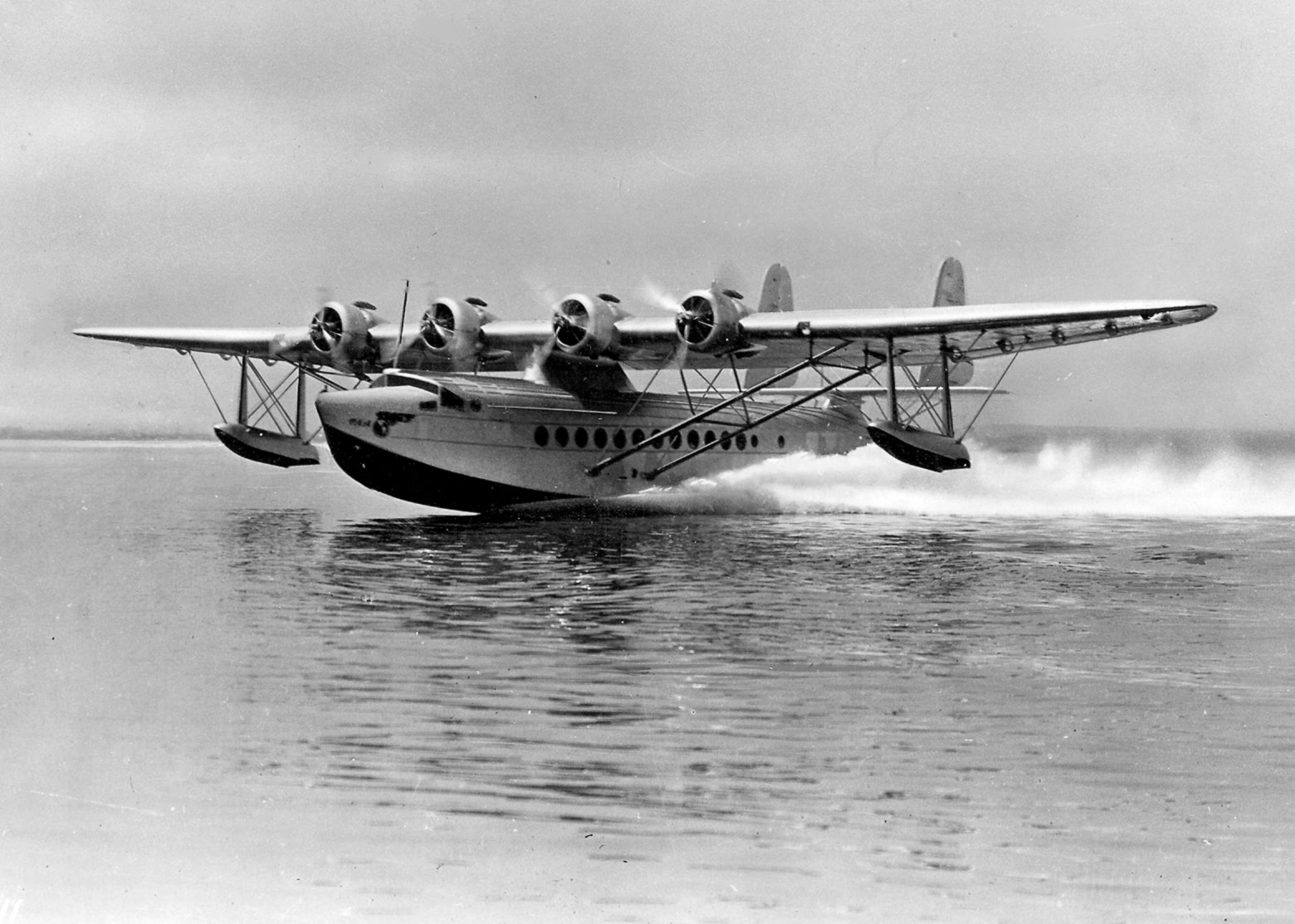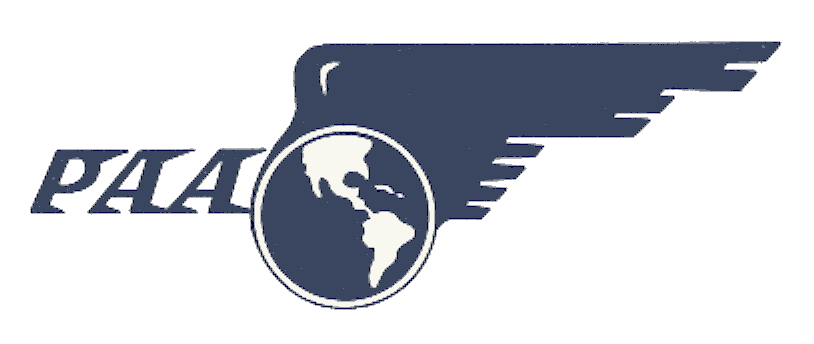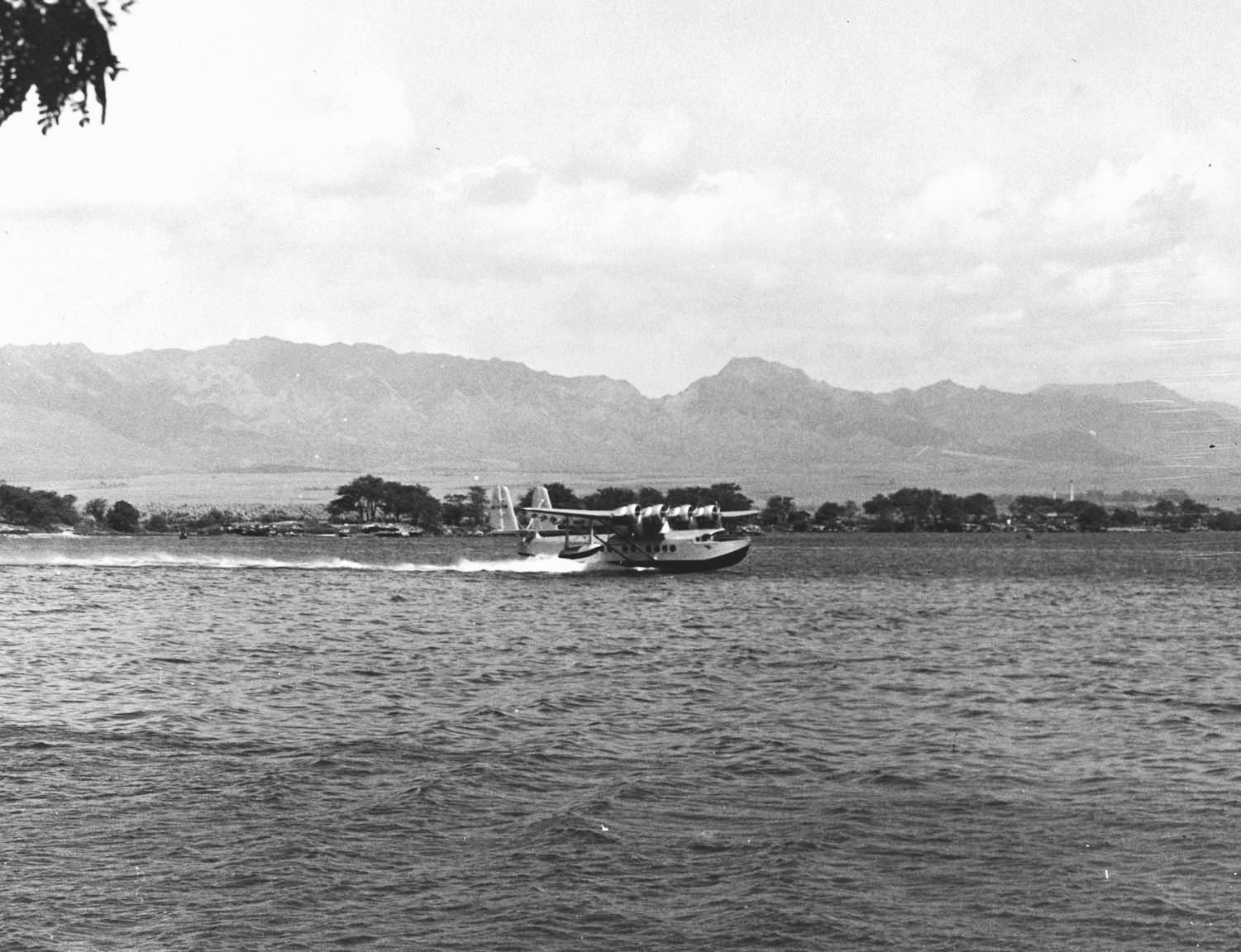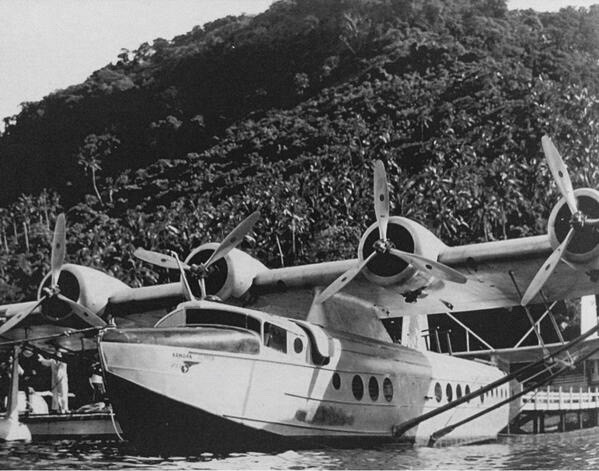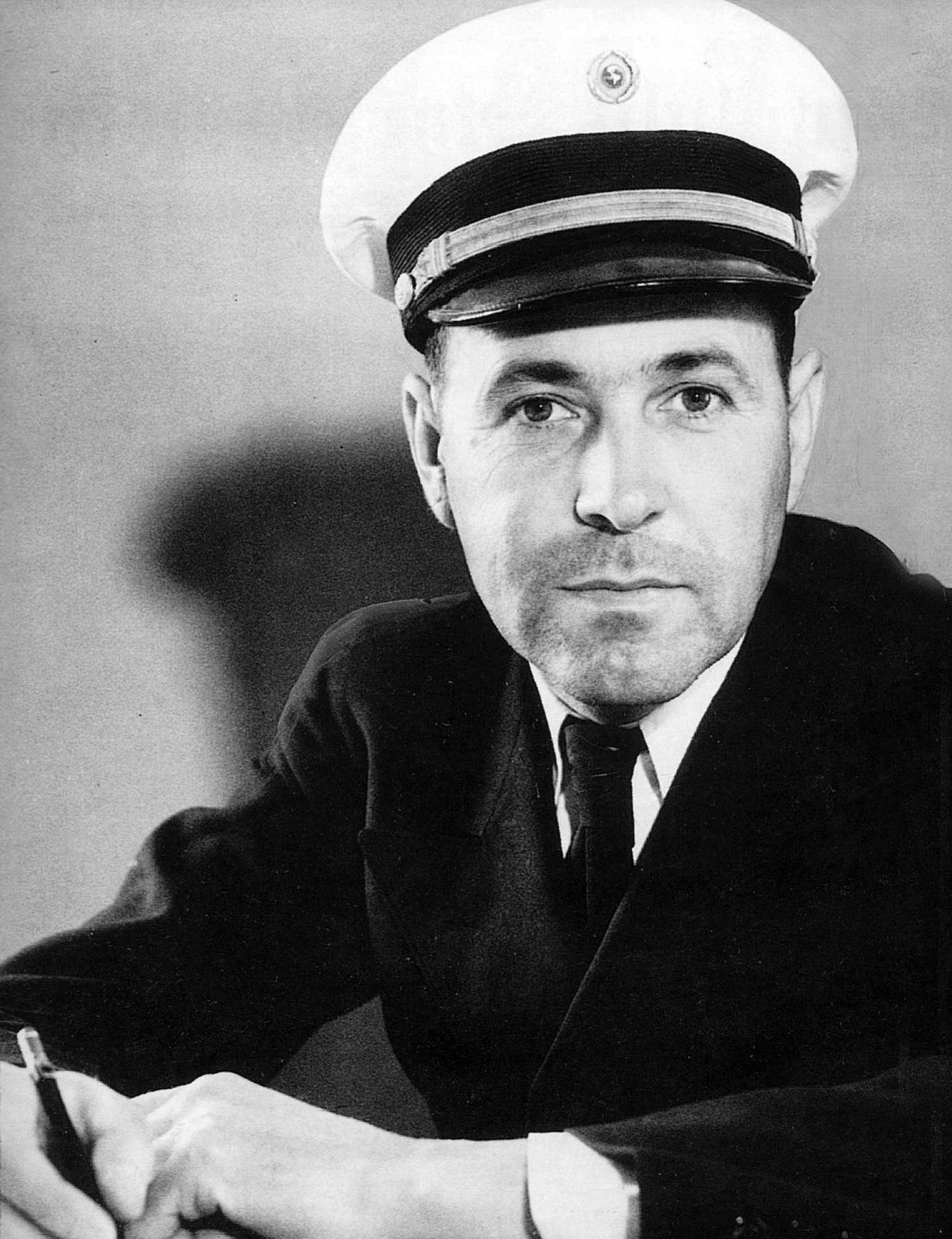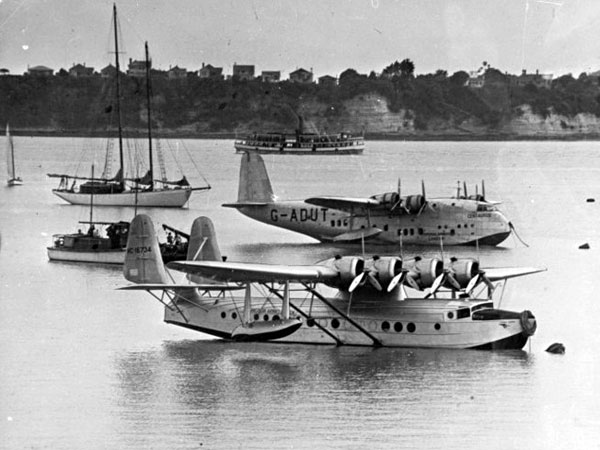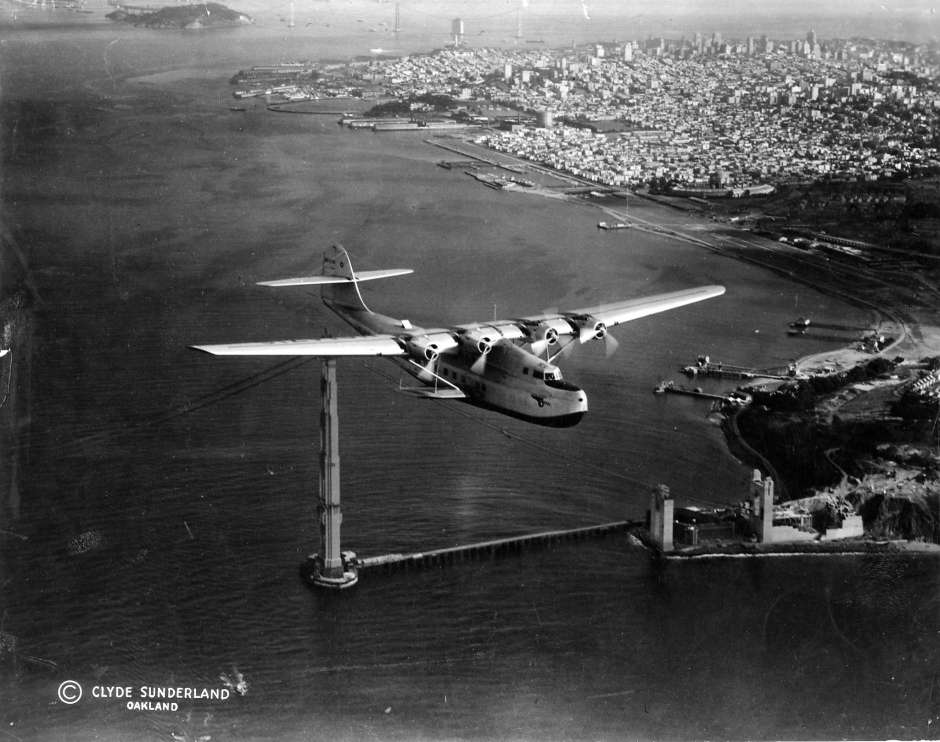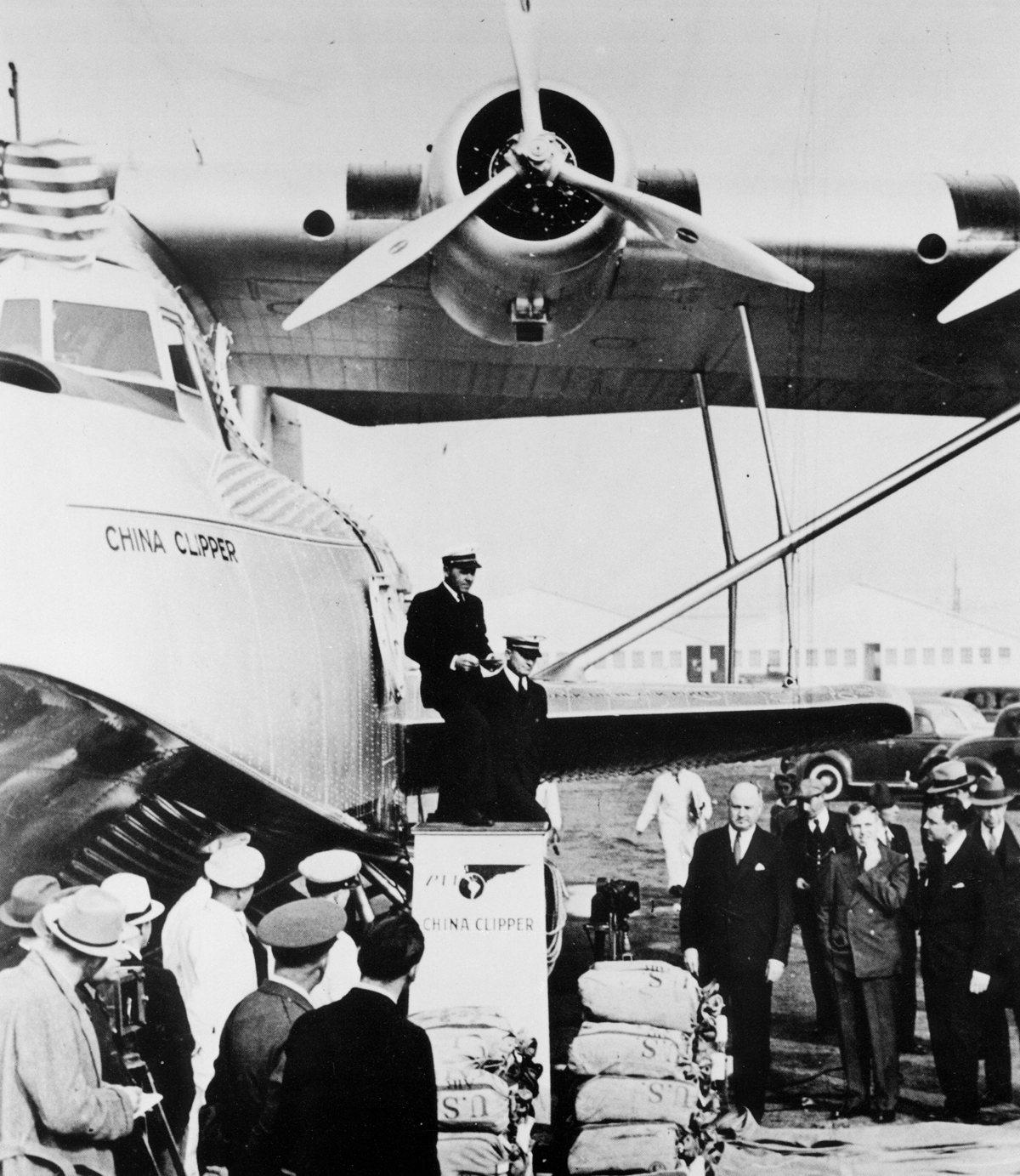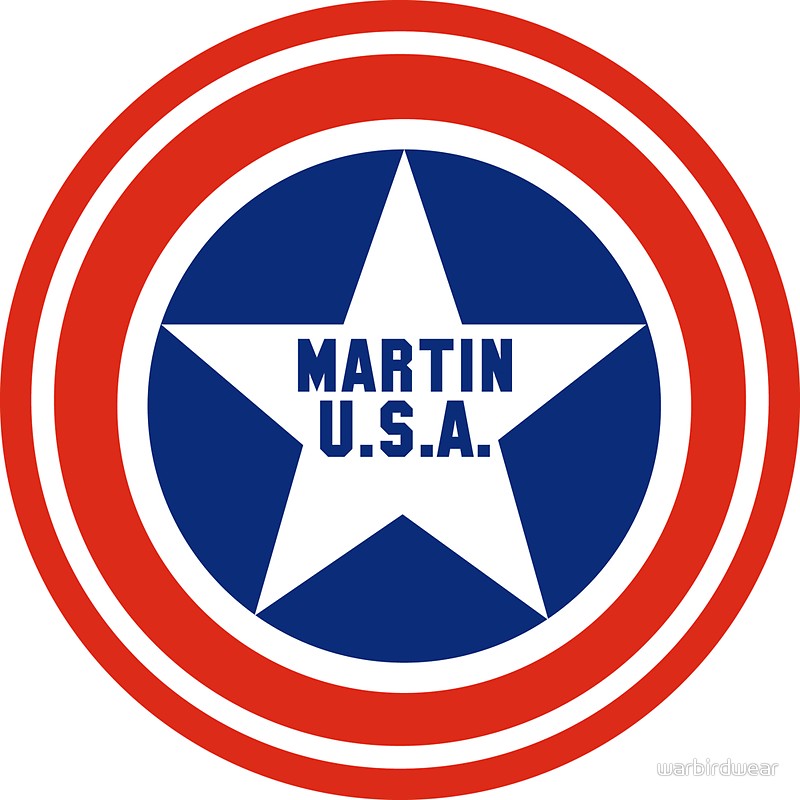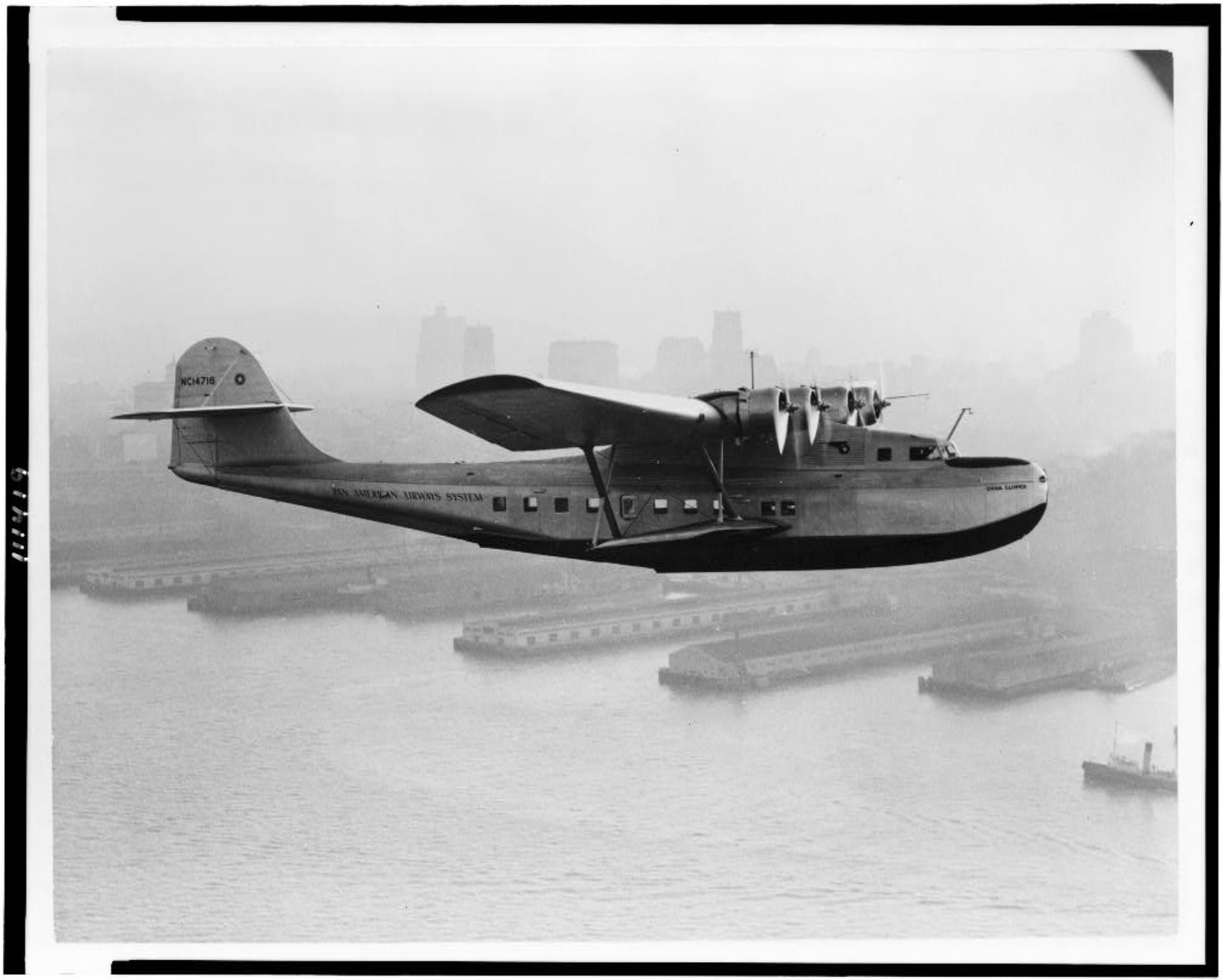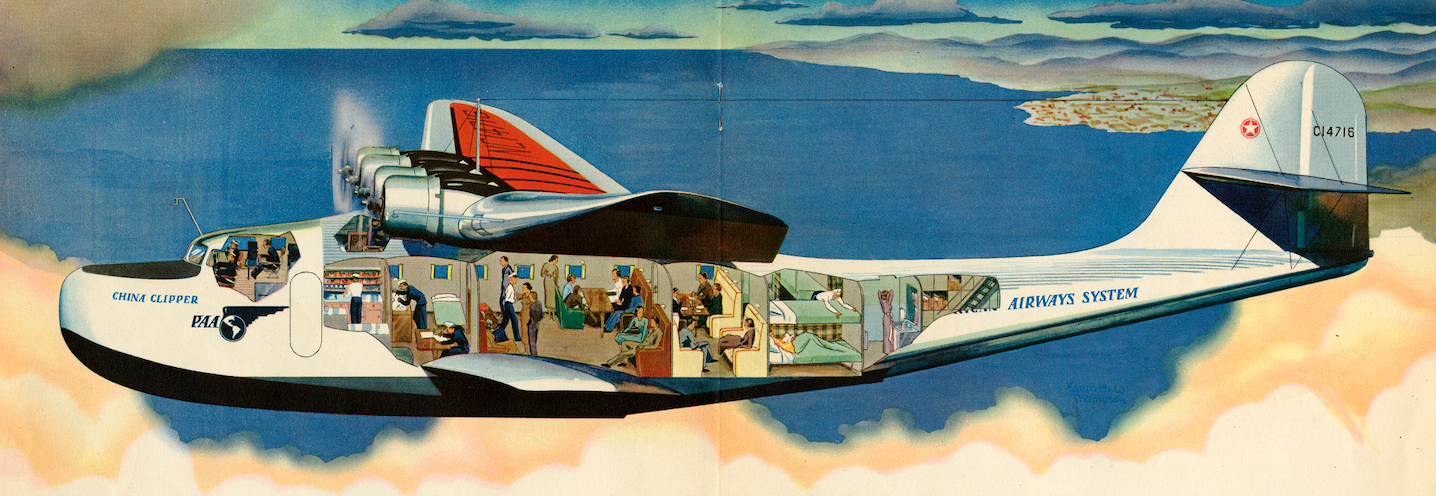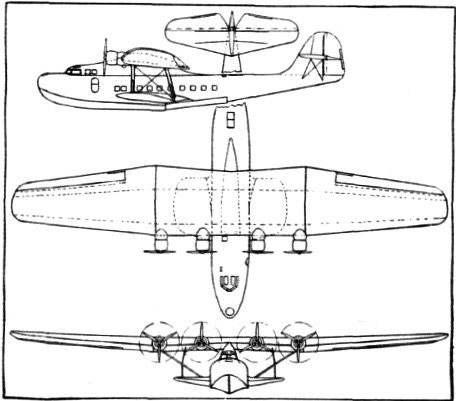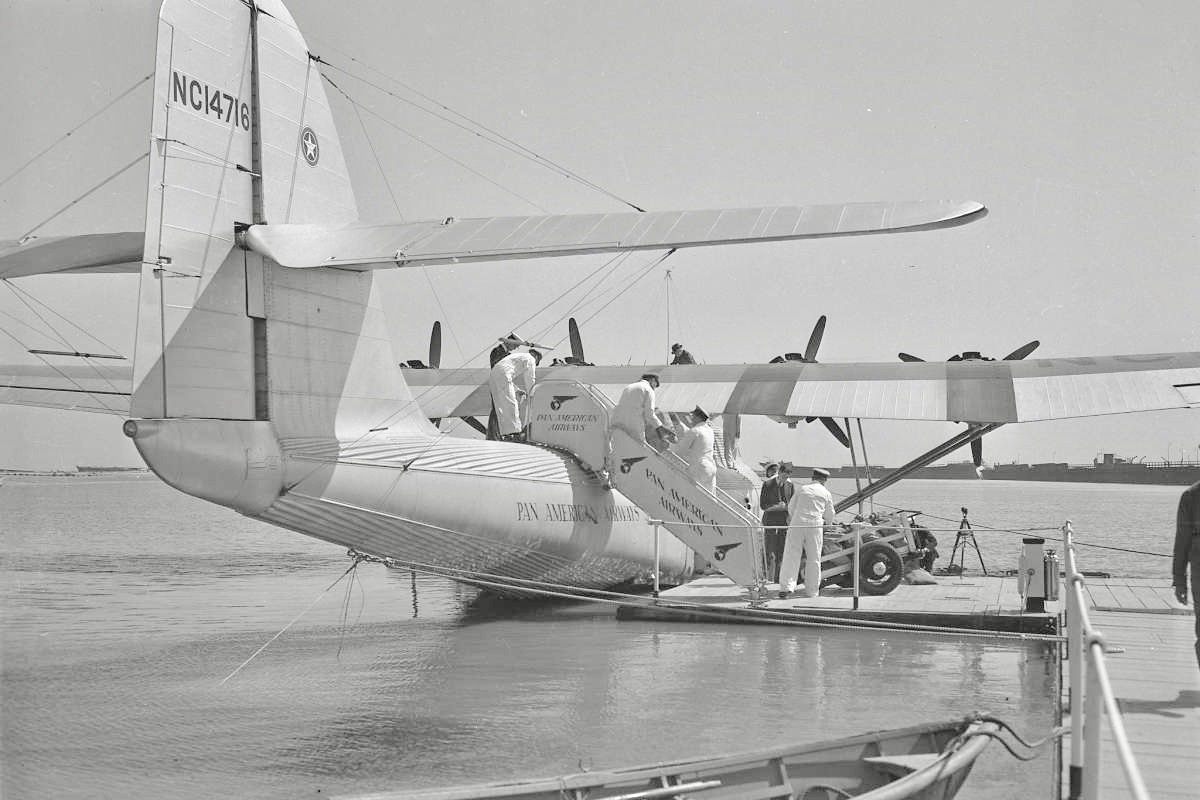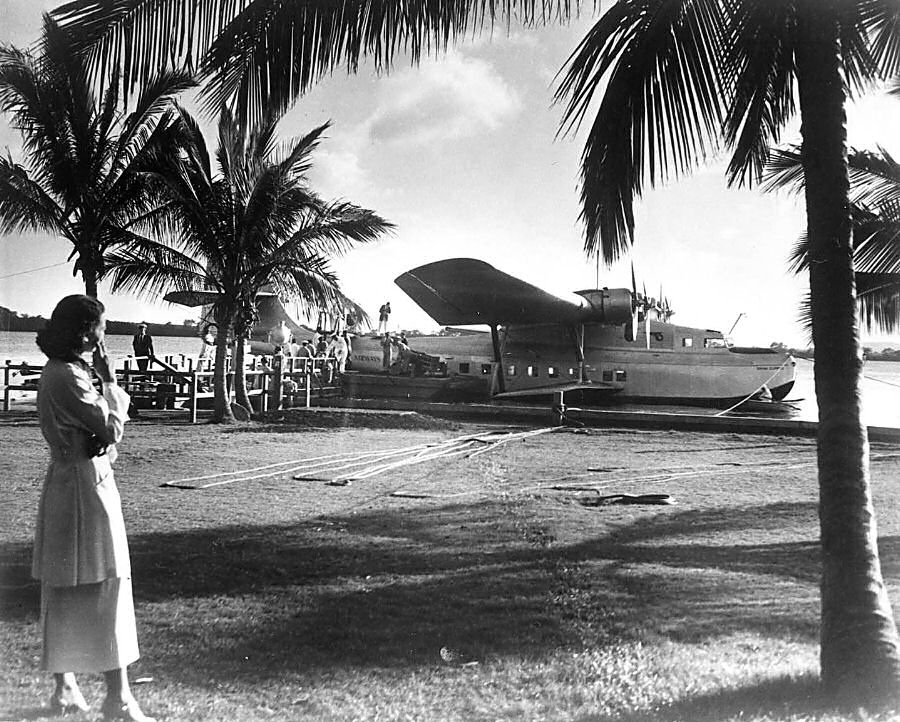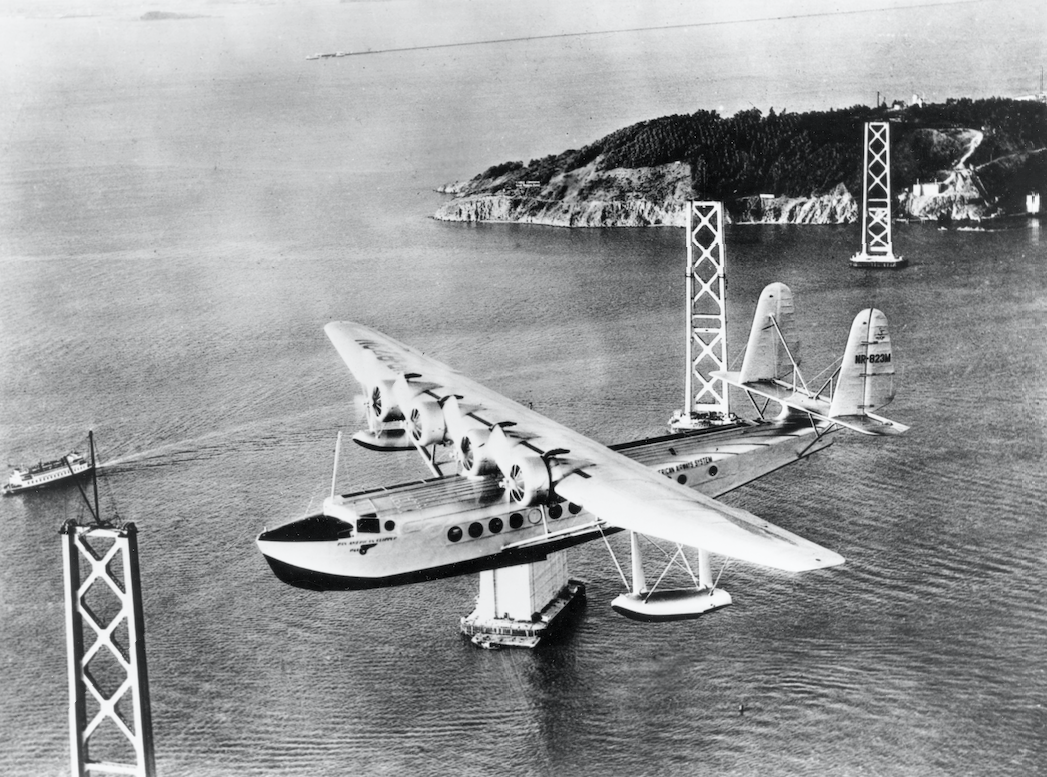
16 April 1935: At 3:42 p.m. Pacific Standard Time (23:42 Greenwich Mean Time), Pan American Airway’s Sikorsky S-42 Clipper, NC823M, pulled away from the dock at Alameda, California, on a survey flight to determine the feasibility of long range passenger flights across the Pacific Ocean.
After a 30 second takeoff run of about 1,700 feet (518 meters), the S-42 lifted from the waters of San Francisco Bay at 3:50 p.m., Pacific Standard Time (23:50 G.M.T.).
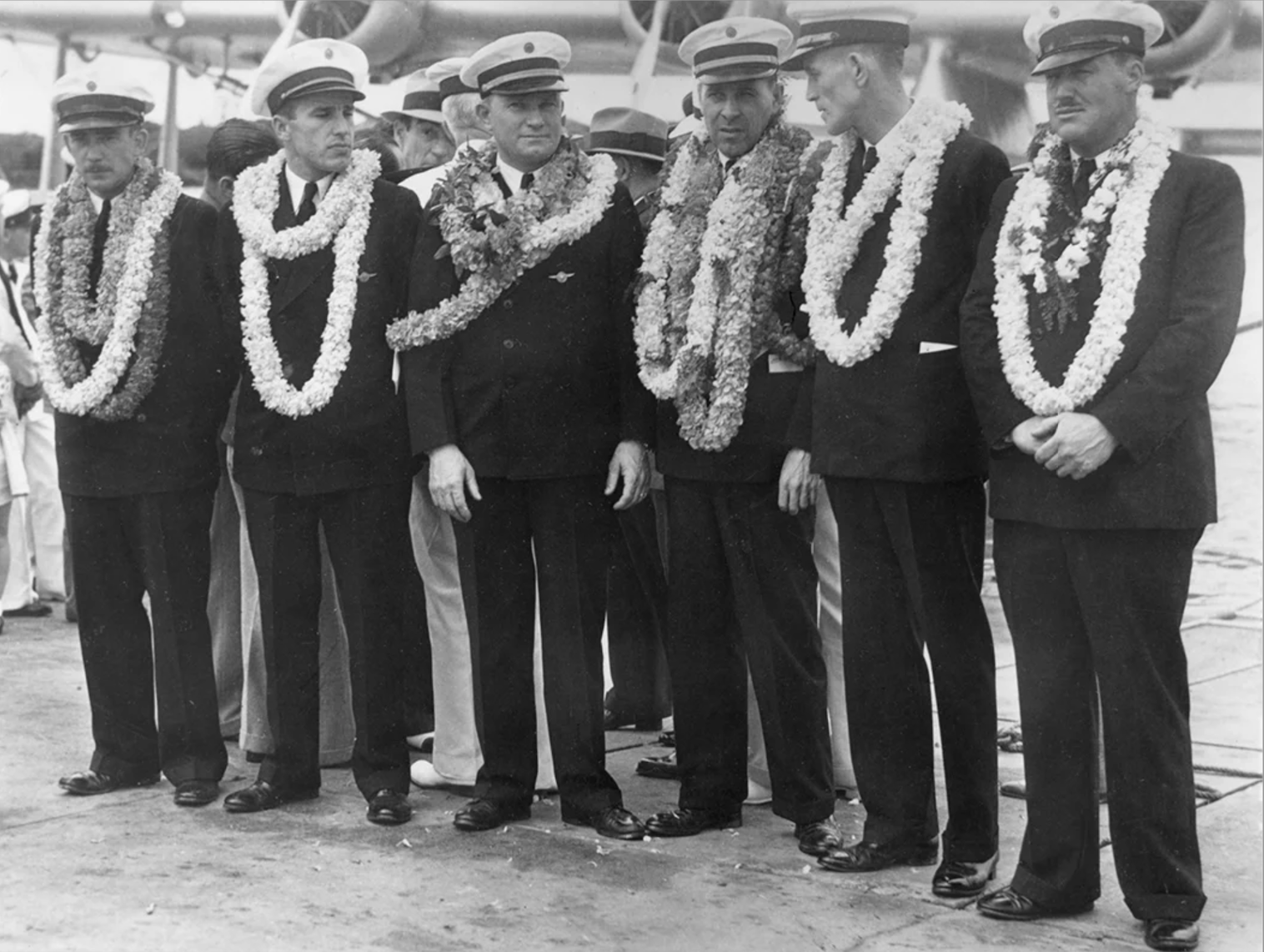
The Clipper’s crew were Captain Edwin Charles Musick; First Officer Robert Oliver Daniel (“Rod”) Sullivan; Fred Joseph Noonan, navigator; Victor A. Wright, flight engineer; Harry R. Canaday, junior flight officer; and Wilson Turner Jarboe, Jr., radio operator.
The airplane carried 150 pounds (68 kilograms) of mail and two tons (1,814 kilograms) of mechanical and engineering equipment for Pan Am’s base in Hawaii. Postage for the approximate 10,000 letters varied from $1.00 to $2.50. ($22.80 – $56.99 in 2024 U.S. dollars). The Clipper carried 3,000 gallons (11,356 liters) of gasoline and 300 gallons (1,136 liters) of oil.
The flight was made at altitudes varying from 4,000 to 8,500 feet (1,219 to 2,591 meters).
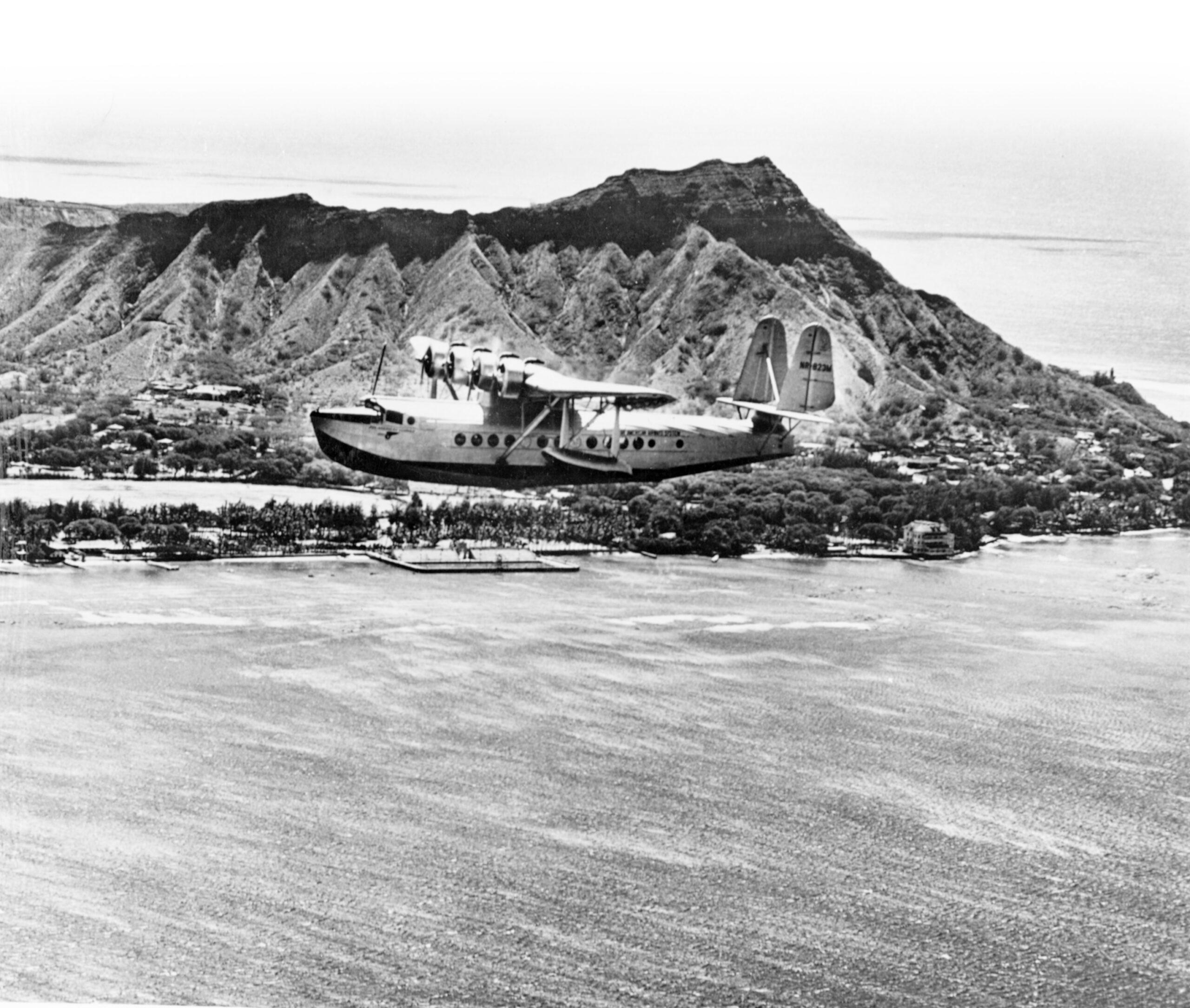
NC823M arrived overhead Diamond Head, Territory of the Hawaiian Islands, at 7:05 a.m., Hawaii Standard Time (17:35 G.M.T.), 17 April. [In 1935, Hawaii Standard Time was G.M.T. + 10 hours, 30 minutes] The S-42 was joined by an escort of five patrol planes from the U.S. Navy Patrol Squadron 10 (VP-10) and ten “pursuit” planes. (These were not not specified in contemporary newspaper articles, but the Navy planes were probably Consolidated P2Y-1s, while the “pursuits” were most likely U.S. Army Boeing P-26 monoplanes.)
The Clipper circled the city at about 1,000 feet (305 meters). It spent 52 minutes circling the city, Waikiki Beach, the Ewa plantation, and the U.S. Army’s Schofield Barracks.
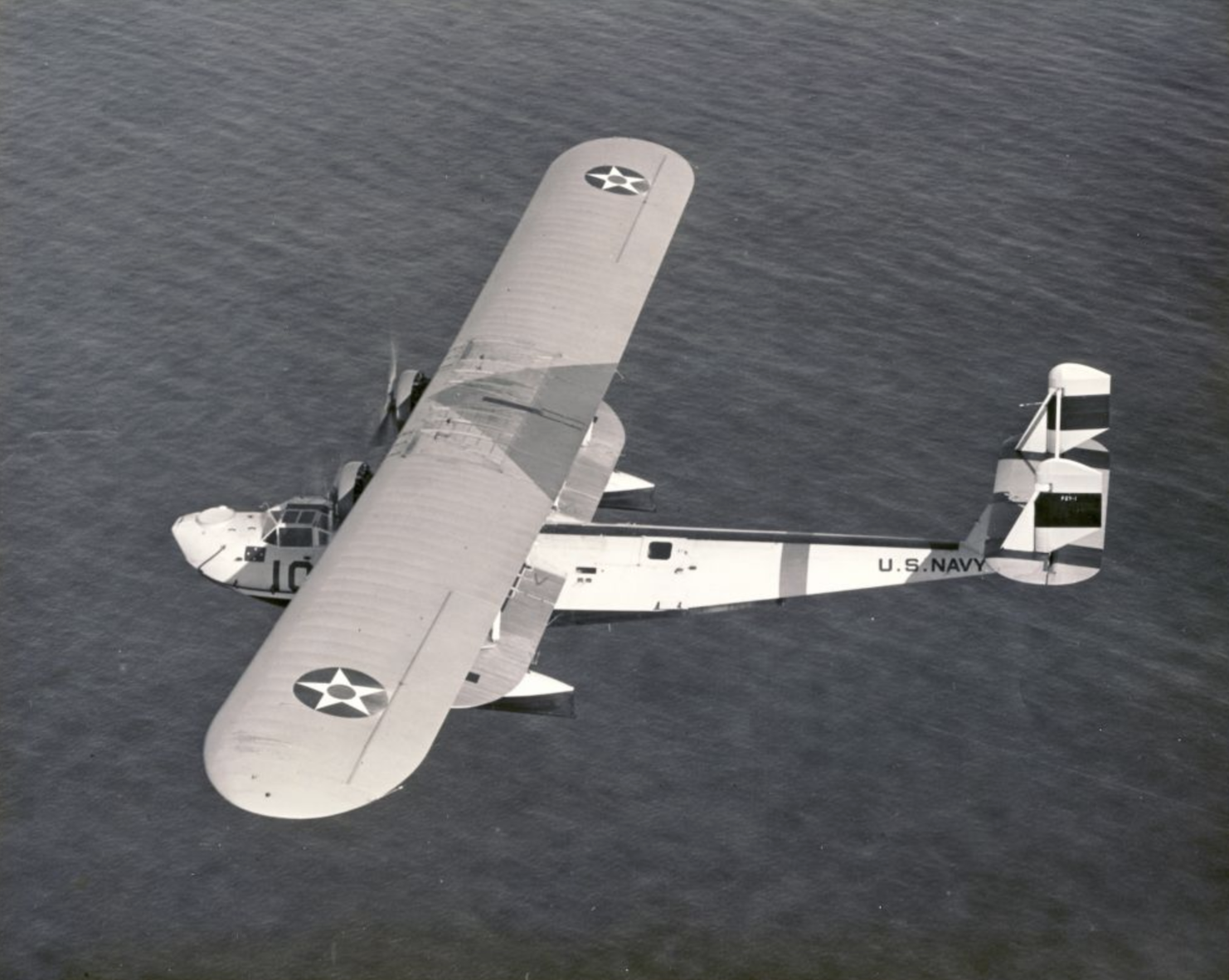
The S-42 touched down at Pearl Harbor at 7:57 a.m., H.S.T., 17 April, (10:27 a.m., P.S.T./17:27 GMT.) after a flight of 17 hours, 45 minutes.¹ Flying a Great Circle Route, the total distance flown was approximately 2,090 nautical miles (2,405 statute miles/3,870 kilometers).² The average speed was about 117.75 knots (135.5 miles per hour/218 kilometers per hour).
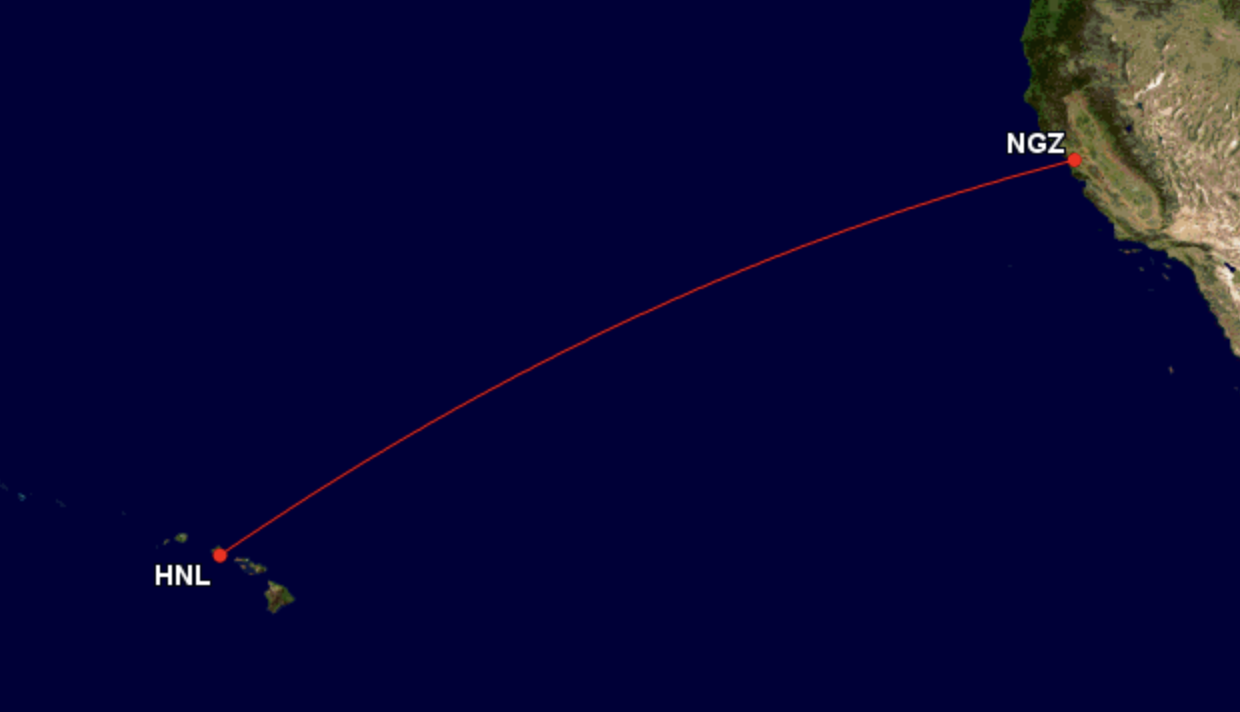
After landing, the flying boat shut down two of its engines and taxied to the seaplane ramp at Ford Island.
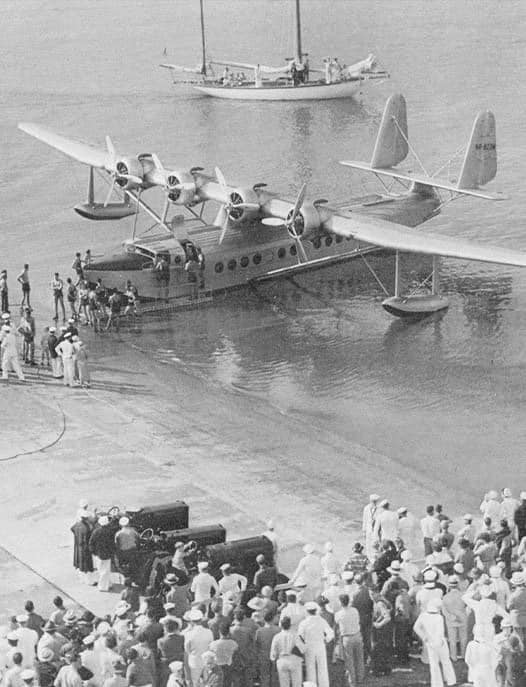
NC823M was only the twelfth airplane to successfully fly from California to Hawaii. The first was the U.S. Army’s Atlantic-Fokker C-2, Bird of Paradise, on 29 June 1927.³ For reference, VP-10s six P2Y-1s had taken 24 hours, 45 minutes to reach the islands in 1934.
The Sikorsky S-42 was a four-engine long-range flying boat built for Pan American Airways by the Vought-Sikorsky Aircraft Division of United Technologies at Stratford, Connecticut. It was 67 feet, 8 inches (20.625 meters) long with a wingspan of 114 feet, 2 inches (34.798 meters). The S-42 had an empty weight of 18,236 pounds (8,272 kilograms) and gross weight of 38,000 pounds (17,237 kilograms). It could carry up to 37 passengers.
The S-42 was powered by four air-cooled, supercharged, 1,690.537-cubic-inch-displacement (27.703 liters) Pratt & Whitney Hornet S1E-G nine-cylinder radial engines with a compression ratio of 6.5:1. The S1E-G had a Normal Power rating of 750 horsepower at 2,250 r.p.m., to 7,000 feet (2,134 meters), and 875 horsepower at 2,300 r.p.m., for Takeoff. The engines drove three-bladed Hamilton Standard constant-speed propellers through a 3:2 gear reduction. The S1E-G was 4 feet, 1.38 inches (1.254 meters) long, 4 feet, 6.44 inches (1.383 meters) in diameter, and weighed 1,064 pounds (483 kilograms).
The S-42 had a cruise speed 165 miles per hour (266 kilometers per hour) and maximum speed of 188 miles per hour (303 kilometers per hour) at 5,000 feet (1,524 meters). The service ceiling was 16,000 feet (4,877 meters). It could maintain 7,500 feet (2,286 meters) with three engines. Its range was 1,930 miles (3,106 kilometers).
Ten Sikorsky S-42, S-42A and S-42B flying boats were built for Pan Am. None remain in existence.
¹ “Flight time” is generally defined as from the time the aircraft first moves under its own power for the purpose of flight until it comes to rest after landing. In this case, the flight time commenced when the S-42 pulled away from the dock in Alameda, not the time it actually lifted from the water of San Francisco Bay.
² In actuality, the S-42 taxied on San Francisco Bay before taking off, then flew west over the Golden Gate Bridge before turning on its course to Hawaii. It arrived overhead Diamond Head on the island of Oahu before landing on the waters of Pearl Harbor. The actual distance flown is therefore an approximation.
³ Please see This Day in Aviation at https://www.thisdayinaviation.com/28-29-june-19/
© 2024, Bryan R. Swopes
